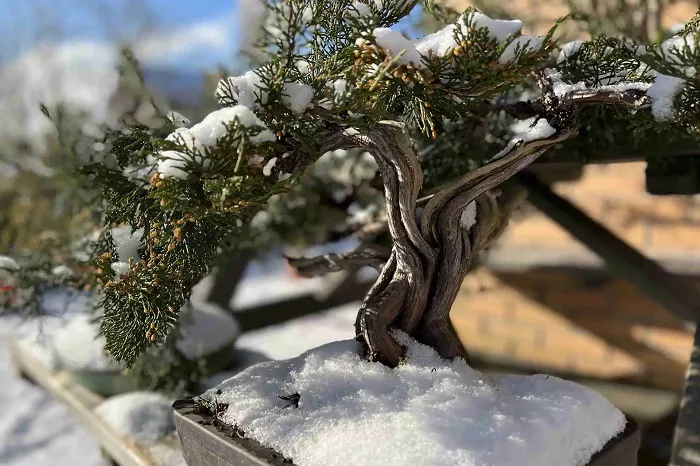Bonsai trees are like tiny, living works of art. They capture the essence of nature in miniature form. Many people wonder just how long these delicate yet resilient trees can survive. The answer is not a simple one, as it depends on a variety of factors including the species of the tree, the care it receives, and its environment. Let’s delve into the fascinating world of bonsai longevity.
Factors Influencing Bonsai Lifespan
Species of the Tree
Different species of trees have different natural lifespans. For example, some species like the juniper can live for hundreds of years in the wild. When cultivated as bonsai, they can still achieve impressive ages. On other the hand, species that are relatively short-lived in their natural habitat may not live as long when grown as bonsai. The genetic makeup of each species plays a crucial role in determining how long it can survive under bonsai conditions.
Quality of Care
The care provided to a bonsai tree is perhaps the most significant factor in determining its lifespan. Regular watering, proper pruning, and timely repotting are essential. Overwatering or underwatering can lead to root rot or dehydration, both of which can be fatal. Pruning helps to maintain the tree’s shape and promotes healthy growth. If done incorrectly, it can stress the tree and shorten its life. Repotting is necessary to refresh the soil and provide room for root growth. Neglecting this can result in a tree that is root-bound and unhealthy.
Environmental Conditions
The environment in which a bonsai tree is kept also affects its longevity. Bonsai trees need adequate sunlight, but too much direct sunlight can scorch the leaves. Temperature is another important factor. Some species can tolerate a wide range of temperatures, while others are more sensitive. Humidity levels also play a role. Many bonsai trees thrive in slightly humid conditions, and maintaining the right humidity can help prevent issues like leaf drop. Protecting the tree from extreme weather conditions, such as harsh winters or intense heatwaves, is crucial for its long-term health.
Examples of Long-Lived Bonsai Trees
Ancient Juniper Bonsai
There are many examples of ancient juniper bonsai trees that have been passed down through generations. Some of these trees are over a thousand years old. Their longevity is a testament to the careful care and attention they have received over the centuries. These trees often have gnarled trunks and intricate root systems, which add to their beauty and character. The fact that they have survived for so long is a reminder of the potential lifespan of bonsai trees when given the right conditions and care.
Century-Old Maple Bonsai
Maple bonsai trees are also known for their long lives. Some specimens have been cultivated for over a hundred years. These trees are prized for their vibrant foliage, which changes color with the seasons. The longevity of these maple bonsai trees is a result of the dedication of their caretakers, who have meticulously maintained them over the years. They serve as a beautiful example of the enduring nature of bonsai art.
Tips for Extending Bonsai Lifespan
Proper Watering Techniques
Watering is a fundamental aspect of bonsai care. It is important to understand the specific watering needs of your tree species. Generally, bonsai trees should be watered when the top layer of soil is slightly dry. This can vary depending on factors like temperature and humidity. Using a well-draining soil mix helps to prevent waterlogging, which can lead to root problems. Observing the tree and adjusting the watering schedule accordingly is key to maintaining its health.
Pruning and Shaping
Pruning is essential for shaping the bonsai tree and promoting healthy growth. It is important to learn the correct techniques for pruning your specific tree species. Pruning should be done carefully to avoid damaging the tree. Removing dead or overgrown branches helps to improve air circulation and light penetration. This not only enhances the tree’s appearance but also contributes to its overall health and longevity.
Repotting and Soil Care
Repotting is a crucial aspect of bonsai maintenance. Most bonsai trees need to be repotted every few years to refresh the soil and provide room for root growth. The frequency of repotting depends on the species and the age of the tree. Using a high-quality bonsai soil mix is important. This type of soil is designed to provide good drainage and aeration, which are essential for healthy root development. Proper repotting techniques help to minimize stress on the tree and ensure its continued growth.
Pest and Disease Management
Protecting the bonsai tree from pests and diseases is vital for its longevity. Regular inspection of the tree can help to identify any issues early on. Common pests like aphids and spider mites can be controlled with natural remedies or appropriate insecticides. Keeping the tree in a healthy environment and providing proper care can help to prevent disease. If a disease does occur, prompt treatment is necessary to prevent it from spreading and causing further damage.
Conclusion
Bonsai trees can live for many years, even centuries, with the right care and conditions. Their longevity is a testament to the dedication of their caretakers and the resilience of the trees themselves. By understanding the factors that influence their lifespan and providing proper care, we can enjoy the beauty of these miniature trees for generations to come.


